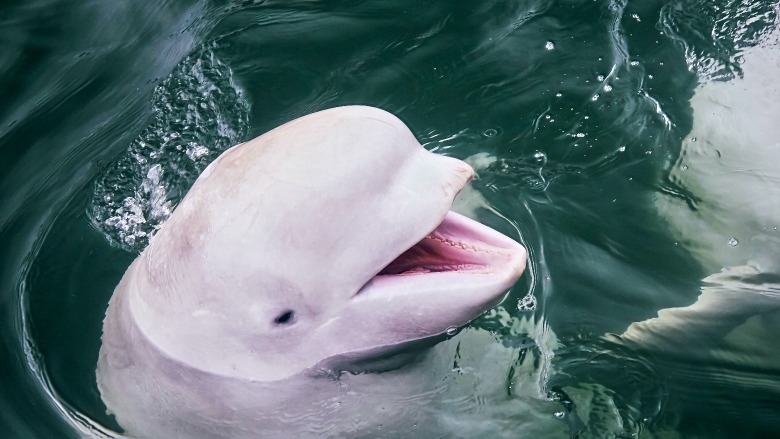Population decline in Alaska beluga whale population linked to low birth, survival rates
Researchers studied over a decade of photographic records of individual whales and determined that belugas in Alaska's Cook Inlet have relatively low rates of birth and survival, which are both likely contributing to the population’s decline.

The beluga whale population in Alaska’s Cook Inlet, which connects Anchorage to the North Pacific Ocean, is listed as endangered and has declined by over 75% from about 1,300 whales in the late 1970’s to fewer than 300 today.
Understanding whether the decline is due to low birth or low survival rates, or a combination of the two, can give scientists clues about the external threats that are impacting the population. For Cook Inlet belugas, birth and survival rates have been difficult to study until now.
In a new study, researchers with Montana State University, the Cook Inlet Beluga Whale Photo-ID Project, the U.S. Geological Survey and the University of Washington worked together to take on the challenge of studying this population.
“Our new analysis shows that the lack of recovery in the Cook Inlet beluga population is likely a result of both low birth rates and low survival rates for some portions of the population,” said Gina Himes Boor, Assistant Research Professor at Montana State University and lead author of the new study.
To calculate the demographic rates, the team developed an entirely new statistical model that focuses on animals who care for their young for multiple years. The analysis was based on data from thousands of photographs of whales and their calves between 2005 and 2017 by the Cook Inlet Beluga Whale Photo-ID Project.
“Using photos, we can track individual whales over time based on natural markings on their backs,” said Tamara McGuire, principal investigator for the Photo-ID Project and a co-author of the study. “We use these sighting histories to inform us of how the population is doing.”
With the information from the new study, scientists and managers can begin to assess why adult females aren’t giving birth as often as their counterparts in healthy populations and why some portions of the population are suffering higher than expected mortality rates. That can help determine if it’s linked to limited food sources, stress, contaminants, disease or another factor.
The statistical model can also help answer similar questions for other wildlife.
“Our work will enable estimation of birth rates for any species that cares for its young over multiple years and for which reproductive rate estimation was previously impossible,” said Himes Boor. “For declining populations like the Cook Inlet beluga whale, we need to develop new ways to study them, and we need to develop creative new management approaches to reverse these serious declines.”
The study was published in the journal Methods in Ecology and Evolution.
Citation: Himes Boor, G. K., McGuire, T. L., Warlick, A. J., Taylor, R. L., Converse, S. J., McClung, J. R., and Stephens, A. D., 2022, Estimating reproductive and juvenile survival rates when offspring ages are uncertain: a novel multievent mark-resight model with beluga whale case study: Methods in Ecology and Evolution.
Photo used in carousel at top of release taken under MMPA/ESA Research Permit #18016.
Prior studies, like this one published in Environmental Toxicology and Chemistry in 2021, suggest high levels of contaminants in prey causes apex predators like Killer Whales to likewise develop high levels of contamination that are then passed down to the next generation.



